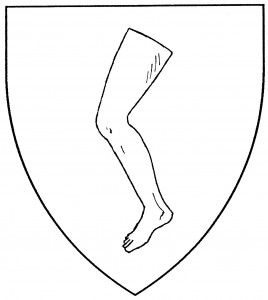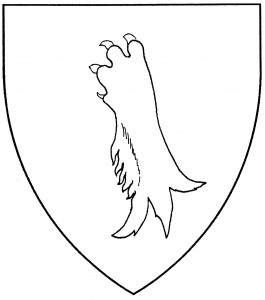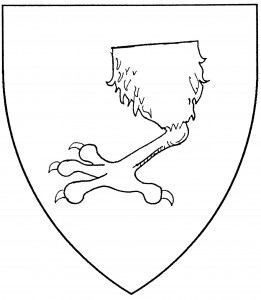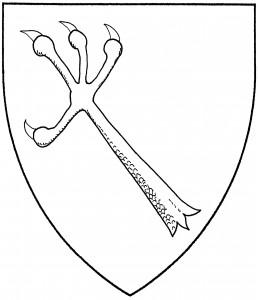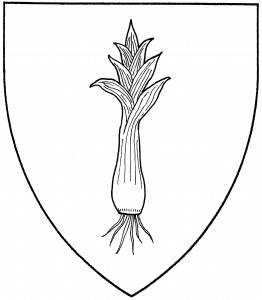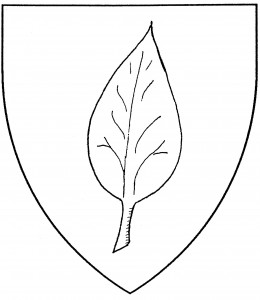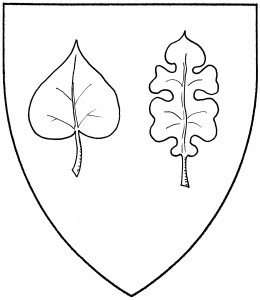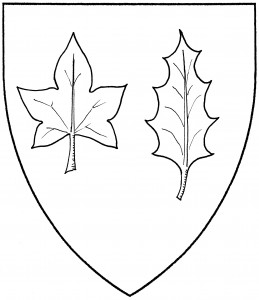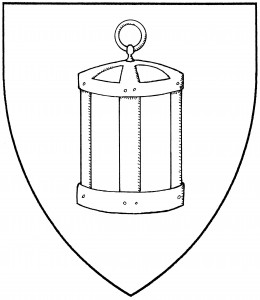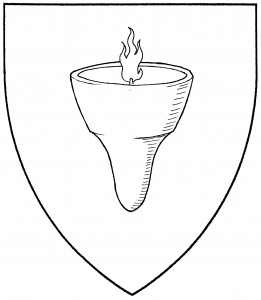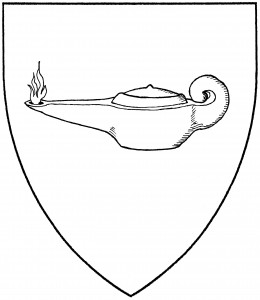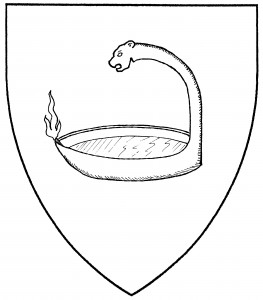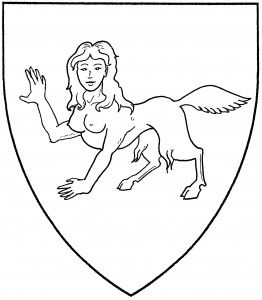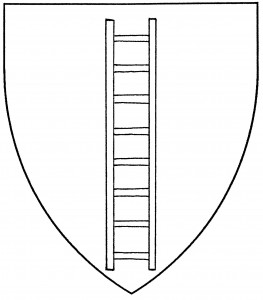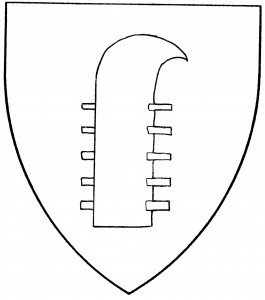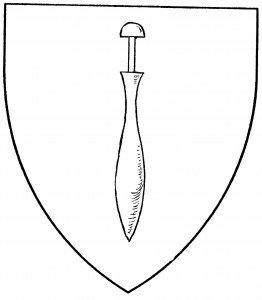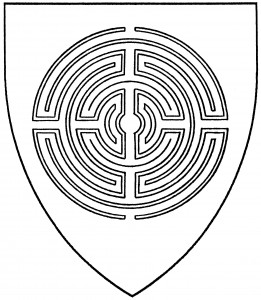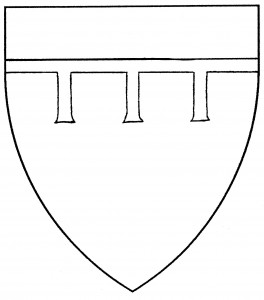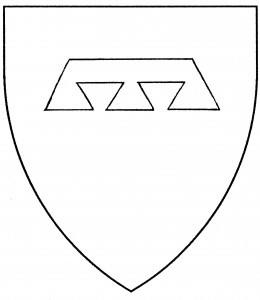Legs are the limbs used for locomotion. Any legged creature may contribute a leg to heraldry; legs from humans, eagles, lions, bears, deer and horses are found in period armory.
The default leg is the human leg. The human leg is severed well above the knee; it should be specified whether the leg is couped (as in the illustration) or erased. By default, the human leg is shown bare; if blazoned “proper”, it follows the same Society blazon conventions as full humans proper, as described under human figure. The human leg may also be clothed in men’s hosen, as in the canting arms of de la Hose c.1275 [ANA2 550], or be shod in sandals or shoes.
Some animals’ legs have special terms in blazonry. A lion’s leg may be called its “gambe” or “jambe”; as a charge, it dates from at least 1413, in the arms of von Litaw [Conz.Const. cliiii]. (A dragon’s leg may also be called its “jambe”.) Birds’ legs may be severed “à la quise”, at the thigh; this usage is found c.1480, in the arms of Lancaster [DBA2 383]. Lions’ and dragons’ jambes are erect by default, with their claws to chief; humans’ and birds’ legs are foot down by default. The illustrations show a lion’s jambe erased and an eagle’s leg couped à la quise.
A “foot” is the section of the leg below the knee. Human feet are found, dating from c.1295 in the arms of Shrigley [ANA2 453]; they are detached from their legs at the ankle, and have their toes to dexter by default.
Of animals’ feet, the most confusion has arisen with birds’ feet: a common mistake is to blazon the foot as a “claw” or “talon”, which properly refers only to the toenail. The bird’s foot is a period charge, as found in the arms of von Grünau, 1605 [Siebmacher 58]; it includes no part of the thigh, but only the unfeathered portion below the joint. The illustration shows a bird’s foot bendwise.
The majority of beasts’ and birds’ feet (as distinct from legs) are erect by default, with the claws to chief; only human feet seem to go downwards by default. For related charges, see claw (crab’s), sole, triskelion. See also ham.
The Order of the Jambe de Lion, of An Tir, bears: Checky Or and argent, a lion’s jambe bendwise inverted erased sable.
Pascal Foljambe bears: Azure, a leg couped Or.
Anlaug Dalesdotter bears: Or, three armored legs azure.
Emma Barfoot bears: Sable, a foot couped and in chief a bar argent.
Lothar von Katzenellenbogen bears: Or, in saltire five lion’s jambes couped at the shoulder gules.
Rauðbjorn Ágeirsson bears: Azure, three bear’s jambes erased Or.
Cett Donegal bears: Gules, three eagle’s jambes erased à la quise contourny argent.
Wulfwen atte Belle bears as a badge: In pale a tentacle vert issuant from a boot sable and maintaining a spoon fesswise reversed Or.
